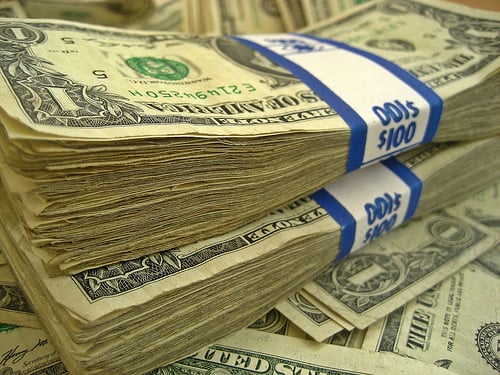This is the second of a series of articles I will be writing on some of the proven methods to obtain a yearly six figure income as a real estate investor. You can read part one of the series here.
Now that we've assembled your team it's time to put them to work. The most obvious question to ask now is, what do I have them do? Well, it depends on what type of investments you choose to make. There are many different types of real estate investments out there and while you could dive right in and start doing all of them, in my opinion it makes sense to pick the one you feel most comfortable with and start with just that, then expand into other areas as your knowledge grows.

Image by 401(K) 2012 via flickr.com
There are two basic philosophies when it comes to real estate investments. These are the get rich quick models, and the get rich slow models. You may be thinking to yourself “why would I ever choose get rich slow over get rich quick?” Keep in mind there are pros and cons to every type of real estate investment and also different levels of risk. Many get rich quick models involve fast turnarounds and little margin for error. This may not be the stress level you want in your life at this time. All that said here are some basic example of the get rich quick model. I'll cover get rich slow in the next article.
Fix and Flip
This is the tried and true method most investors are aware of from either personal experience, television shows or online courses. The model of this investment is to buy distressed or undervalued homes that require some repairs. Then fix the property up and sell it at it's true market value for a profit. Sounds simple enough in theory, in practice however there are many things that can go wrong.
One of the most common problems with a fix and flip scenario is when the repair costs exceed your budget or expectations and eat into your profit. One wrong estimation on the cost to update a kitchen and suddenly your great investment has now turned into a deal that you hope you can get out of and still break even. Another common mistake is over valuating the market and current selling conditions. You may think this house will be worth $250,000 after you fix it up but does the market data support that number or are you just “going on instinct?”. This is why you need to leave yourself a large profit margin on a fix and flip because if the market doesn't support your initial asking price, you need to be able to go lower without losing money.
Tax Deeds
While buying tax deeds themselves are not necessarily a get rich quick scenario, they can be used as such. When you buy a tax deed you are buying title to a property that was foreclosed on by the county for failure to pay real estate taxes. Since in almost all jurisdictions, tax liens are superior to any other lien on the property such as a mortgage, buying a tax deed means all other liens on the property have been wiped out and you now have clean title. If you did your homework then you have purchased this property at significantly below it's current market value. So low in fact that you can “wholesale” it to another investor without having to spend a dime repairing it. There is enough of a profit margin in the property to give you and another investor plenty of room to make money.
The downside to buying tax deeds is when you don't know what you are buying. If you buy a tax deed to a worthless piece of property (say an alleyway or landlocked parcel) then there is no market for it and you now are the proud owner of a useless asset. Buying tax deeds requires a great deal of due diligence to make sure you are getting something you can resell quickly with a big enough profit margin and is a desirable property other investors will want.